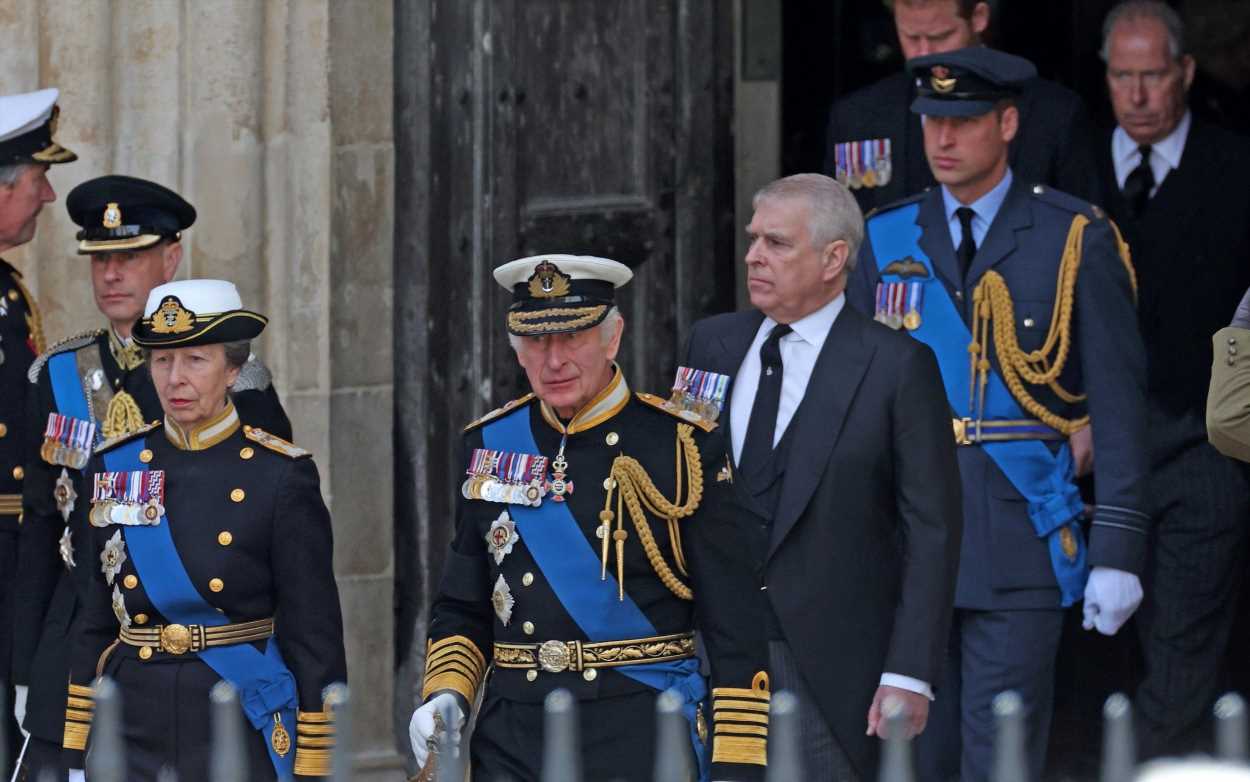THE Queen's final resting place of St George’s Chapel at Windsor Castle is a place steeped in history.
Construction began under King Edward IV in 1475, in part to serve as his burial place.
Over the following half-millennium, numerous kings, queens and members of the Royal Family have had their funerals there – including every monarch since George III.
And it is where The Queen was laid to rest on Monday September 19, following her death.
Her Majesty will be buried alongside her late husband, Prince Philip, the Duke of Edinburgh, who died in April 9, 2021, aged 99.
The Duke has been temporarily lying in the Royal Vault, awaiting his wife’s death.
Read More On The Queen’s Death
Charles grieves as Queen’s coffin reaches final resting place in Windsor
What will the Queen be buried with?
But he will be moved to the King George VI Memorial Chapel – built in 1939 – to be with The Queen who will be laid to rest here.
Elizabeth will be reunited with her sister, Princess Margaret, her father, King George VI, and her mother, Queen Elizabeth the Queen Mother in the memorial chapel.
The Queen's coffin was brought from London to Windsor following a moving service in Westminster Abbey.
Her Majesty made her final journey out of the capital atop a gun carriage through London in a historic procession watched by four billion across the world.
Most read in News
Harry and Meghan appear to hold hands after Queen's funeral
The order of service for the Queen's funeral – read here in full
George & Charlotte WILL attend Queen's funeral after parents intervened
Panic as hundreds of customers are evacuated over 'gas leak'
Her Royal Standard draped coffin, with the Imperial State Crown, Orb and Sceptre, lay-in-state in Westminster Hall for five days before her funeral.
Prince Philip's service gave TV viewers a rare chance to witness live the ceremonial funeral of a senior member of the Royal Family.
Once the Duke’s coffin vanished from the view of the mourners and viewers, on an electrically-powered lift platform, it was deposited at the start of a 15-metre long rock-cut underground passageway that leads into the Royal Vault.
The vault was constructed during 1810–14 underneath what is now known as the Albert Memorial Chapel.
CHEQUEURED HISTORY
It’s had a chequered history, being begun in 1494 to hold the tomb of Henry VI, then Henry VII and finally Henry VIII.
It fell derelict for over two centuries, until finally finished in 1863 as a memorial to Prince Albert, husband of Queen Victoria.
The vault was first used to bury Queen Charlotte, wife of George III, in 1818, and George himself two years later.
It was subsequently used to bury George IV in 1830 and William IV in 1837, but although there was (and still is) plenty of space, Queen Victoria built herself a mausoleum at Frogmore, in Windsor Great Park, and Edward VII and George V were all interred in freestanding tombs on the floor of St George’s Chapel itself.
For George VI, a small extension-chapel was made to St George’s, with a vault underneath, which now holds his coffin, along with that of the Queen Mother and the ashes of Princess Margaret.
Various minor members of the Royal Family have been buried in the vault during the 19th and 20th centuries.
But nowadays such individuals are usually interred in the Royal Burial Ground at Frogmore – including the Duke of Windsor, the former King Edward VIII, who abdicated in 1936.
The vault also holds one foreign king – the exiled George V of Hanover, a grandson of George III.
It takes the form of a vaulted stone-lined room, around 25 metres by 7 metres, with a small altar at the far end.
Along each wall are shelves to hold coffins, and close to the entrance, closed by an iron gate, is a plinth on which the latest arrival is placed, pending a move to either a side-shelf or final interment elsewhere.
Originally lit with oil-lamps, it was fitted with electric light at the beginning of 20th century.
Although it has not received a ‘permanent resident’ since 1930, the vault continues to play a role in royal funerals at Windsor.
After the ceremony the coffin is usually lowered via the electrically-driven platform down to the corridor and into the vault.
There it rests until transferred to its final burial place.
- Professor Aidan Dodson is a historian, archaeologist and Honorary Professor of Egyptology at the University of Bristol. He is the author of British Royal Tombs
Source: Read Full Article



















